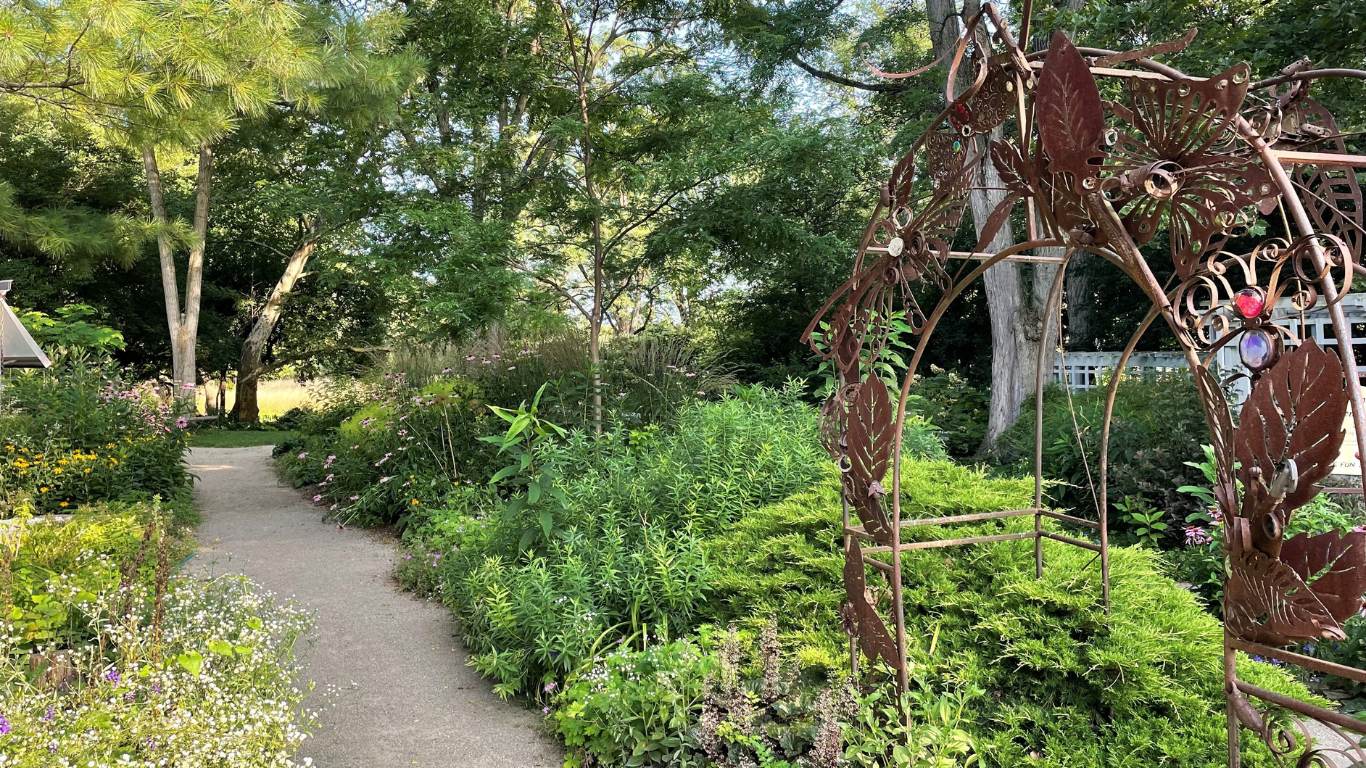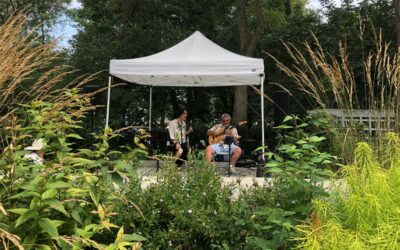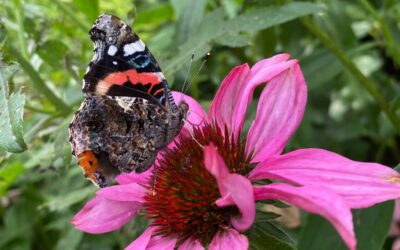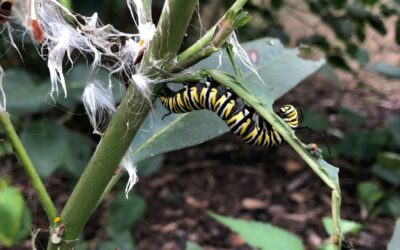Written by Samantha Day, 577 Organic Garden Horticulturist
577 is set up like a permaculture system! This is the epiphany I had as I’ve been preparing for my Permaculture 101 class over the last few weeks. Permaculture, in a nutshell, is a highly integrated and diversified way of growing food and sustainable resources. The emphasis in the design of a permaculture system is to incorporate many different species that create food for humans, animals, and pollinators, while also minimizing the amount of management that goes into the system, aka ~ let nature do its thang.
Diverse systems are resilient systems: they have less pressure from pests, and they’re able to withstand the climate stress that comes with drought, flooding, extra cold winters, or extra hot summers. Perennial foods are specific hallmarks of a permaculture system, such as fruiting trees and bushes, nut trees, perennial plants that you can eat the shoots, roots, leaves, or flowers from, and perennial herbs intermixed that produce spices for the kitchen and also repel pests.
I stumbled into learning about permaculture after graduate school when I applied for a Fulbright student research grant to study in Nepal. It turns out most farmers in Nepal grow their crops in a naturally integrated way: they grow grains and legumes on terraces surrounded by fruit trees, with wild forest surrounding the village, where they forage for berries, mushrooms, fuel, and medicinal plants. So, by the time I left Nepal, I had had a crash course in integrated permaculture food systems.


These days permaculture is growing as a trending topic related to gardening. There are many names for what I consider to be related to, or under the umbrella of permaculture, like “agroforestry”, “foodscaping”, “food forests”, “perennial agriculture”, and “closed-loop systems”. Many permaculture systems are also, for the most part, “no-till” systems.
Permaculture topics get you thinking about how to close loops: how can I direct excess water to my rain garden? How can I use my chickens to keep insect pressure down? How can I use my weeds for compost or food? How can I create microclimates using shade to cool, and structures to warm? So you can see how quickly pursuing permaculture designs for your yard, garden, farm, or a large property opens several new approaches to managing your land.



As you walk around 577, you see annual vegetable gardens established around the dome, but you also see many perennial beds established along paths. These perennial beds include many species with edible components, like serviceberry, cranberry bush viburnum, ostrich fern, rhubarb, raspberry, elderberry, hazelnuts, pawpaw, basswood, spikenard, perennial herbs, and edible flowers. There are mature walnut, apple, butternut, hackberry, pear, and mulberry trees throughout the property. There are less managed woodland areas where it’s possible to forage stinging nettle shoots, dame’s rocket leaves, wild onion, burdock roots, and redbud flowers. You’ll see areas that are full sun where we can grow hot-loving plants, other cool damp areas where we can grow woodland plants, and everything in between.



I don’t think that 577 was necessarily designed from the early days to be a permaculture system. But I do know that Virginia Secor Stranahan valued the “wild-side” of her property, and she preferred to allow nature to run the show. Bennett, 577’s organic landscape horticulturist, joined the team in 2020 and has done a great job clearing out areas with invasive species and replacing them with beneficial species that provide beauty as well as food for humans, wildlife, and/or pollinators. I feel lucky to be able to work in this established, mature system and continually fine-tune what diversity already exists here. I also hope to plant a few more areas intentionally with perennial edible species and cultivate culinary mushrooms in the microclimates that allow it, adding another layer to the productivity of the whole system.



Two other important elements of a permaculture system are community and enjoyment. In a permaculture system, you want to create food and resources, but you also want to share them and create a beautiful space in which to connect with nature and receive the gifts of Earth beyond just what you can eat or use. I like a quote from the book Practical Permaculture to illustrate this:
“The fallacy of self-sufficiency- some people refer to the goal of permaculture as becoming self-sufficient, meaning they aim to provide for all their needs themselves. While perhaps a laudable goal, it isn’t very realistic. Historically, very few people have actually been self-sufficient as individuals or households. Trade and interchange between individuals and family units has always taken place. This was the basis for the formation of villages and commerce thousands of years ago. Relying upon each other and working together is an inherent part of the human experience. Thus, striving for self-sufficiency at a community scale makes much more sense and is much more likely to succeed than trying to do everything yourself.”
Practical Permaculture by Jessi Bloom (Author), Dave Boehnlein (Author), Mr. Paul Kearsley (Illustrator)



We have such a lively community involved with this property that adds to the depth of this integrated system: we have kids learning in the weeds; we have artists observing the insects; we have families resting in the grass; we have people playing music and getting exercise and harvesting food….it’s really quite incredible! Every permaculture system is distinctly different, and when you think about it, 577 is a sort of functional village in and of itself. Permaculture, to me, is a way to think about and see things that have already been around for a long time.
Click HERE to learn more about permaculture and other fascinating horticulture topics during one of Samantha’s upcoming classes.



